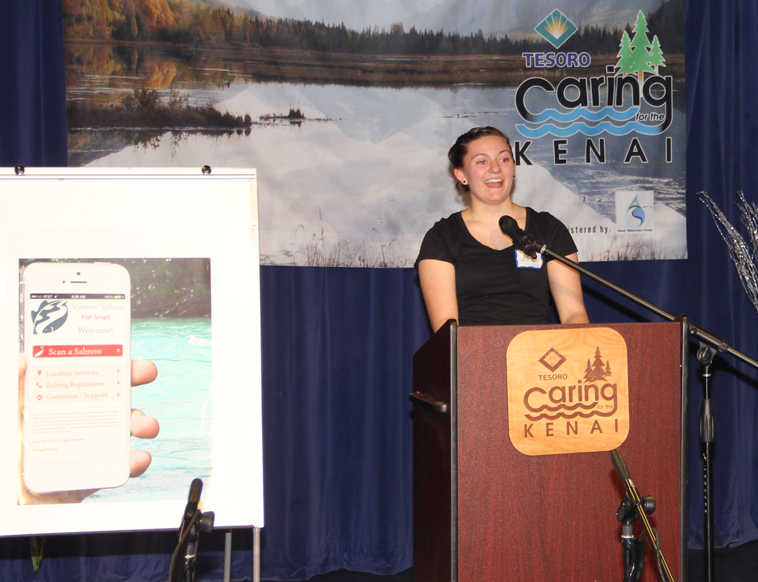Caring for the Kenai participants are modernizing their projects.
Kenai Central High School student Keira Stroh won first place and $1,600 for her “Scannin’ Salmon App” that would not only identify which species has been caught, but where and when fishing is legal on the Kenai River. Third-place winner Shania Johnson designed a “Bear Aware” application that reports recent bear sightings in public areas.
“It will be learning tool for fishermen as well as help the salmon and the Kenai river,” Stroh said.
The program is four years in the making Stroh said. Working with her sister Courtney’s Caring for the Kenai project, ROC The Kenai, included extensive hands on work with salmon species, she said.
Once completed, which Stroh hopes will be by the start of the 2015 fishing season, the program will identify a caught salmon, provide maps of the Kenai river, and provide information including the regulations on whether it is legal to keep the fish.
The most challenging part of the experience is coding the application, Stroh said. It is an iOS application, which requires using Xcode, she said.
“It’s so confusing,” Stroh said with a laugh.
Once a fish is reeled in, the fisherman will take a photograph of the catch, and the application will compare the measurements, colors and other features to hundreds of online pictures to determine which species it is, she said. Background information on the particular species will also be available.
“It will also help to make sure king salmon aren’t mistakenly taken out of the river,” Stroh said.
There will be a free version of the application that will include advertisements, or a $1.99 ad-free version, she said. Some of the proceeds will go to a local, environmental conservation organization, she said.
Second-place winner Daniel Wiest from Homer High School took a more traditional approach to his project. He received $1,100 to further develop his Volcano Eruption Preparedness kit.
Right now Wiest has finished the prototypes for two versions, which he hopes to make available in community buildings, including schools, churches, the community center and the Homer Chamber of Commerce. The aftermath of the 2009 Mount Redoubt eruption inspired his design.
“It was dark, it was gray and we didn’t know if it was safe to go outside without a mask on,” Wiest said. “It was just confusing.”
The kits, which vary in inventory, contain a pamphlet with organizations to contact if an eruption occurs such as the Alaska Volacano Observatory, or how to hear activity reports on the local radio station, he said.
The contents of the kit won’t surprise people, but they might not know how to use them, Wiest said. A -9-by-12-foot drop cloth can be used to cover electronic devices such as a computer, he said.
Ash is very heavy and has the ability to collapse a roof if it already has snow on it, Wiest said. One version comes with a battery operated radio, and water filtration tablets, he said.
“Not everyone is going to need those,” Wiest said.
Each will contain goggles, a facemask, painters tape and reference material, Wiest said. Gloves, a flashlight and matches will also be included.
Wiest said the easiest part of creating his Caring project was the essay.
“It is a good incentive for kids around the Kenai Peninsula to critically think about what they can do to help,” Wiest said.
Reach Kelly Sullivan at kelly.sullivan@peninsulaclarion.com.

